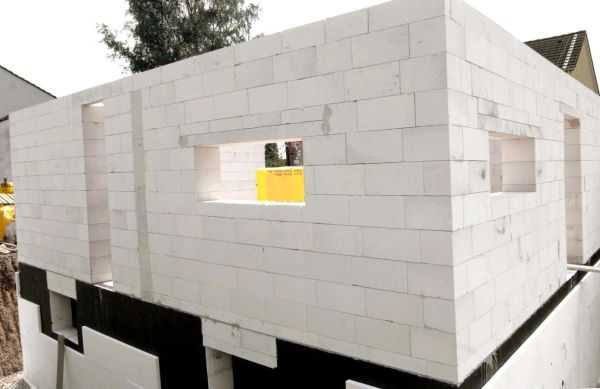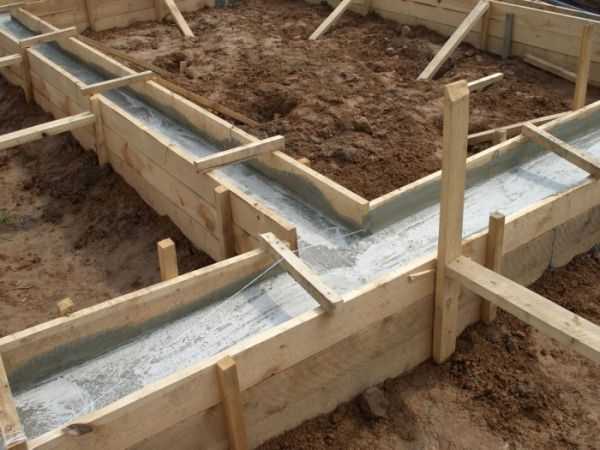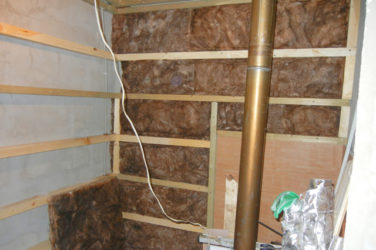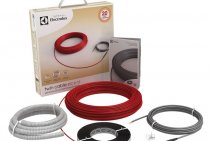Proper insulation of a bath of gas silicate bricks
Wall cladding with siding
Let's first define the terms. Two completely different building materials are used in construction: silicate brick, usually white, obtained by pressing from sand and lime, and gas silicate block obtained from sand, water and lime with the addition of gas-forming additives, usually by autoclaving. The properties of these two materials are completely different. The common thing is their high degree of water absorption, so they definitely require additional protection against moisture, both inside and outside.
I have already written many times that the bath should be insulated with mineral wool from the outside (see here, here). You were correctly told that it is impractical to insulate with mineral wool inside, it will quickly become unusable. If the bath is rarely used, it will in any case cool down to the temperature of the external environment. And, indeed, before using it, the walls will need to be well warmed up each time. No matter how you insulate the walls from the inside, all the same, internal insulation will not be able to retain heat so that the walls remain cold (even from gas blocks), especially the walls of the steam room. The main purpose of the insulation inside is to prevent moisture from entering the walls. In addition, foil insulation is installed in the steam room to reduce heat loss by radiation, which is covered with clapboard. So that each time the walls do not have to be thawed, it is necessary to properly ventilate the bath.
Now about the outer protection of the walls of your bath with siding. Most often, this term is understood as plastic siding. I have repeatedly written about the dangers of using this material for the construction of a bath. In addition, it is necessary to correctly make a multi-layer insulation pie for the outer wall cladding with siding. When building a bath, only natural siding made of wooden boards should be used or external wall protection should be made with plaster, facing bricks, imitation timber, etc. Remember: a bath is needed primarily to improve health, and you should not save on your health.
Aerated concrete bath waterproofing
Do-it-yourself aerated concrete bath: construction technology and a step-by-step guide
Aerated concrete blocks are a new generation material, the production of which has been adjusted taking into account all the difficulties and errors identified in the manufacture of panels of a similar type. They are easy to process, have large dimensions and low weight, which affects the speed and ease of construction. In comparison with the construction of housing, when building a bath from gas blocks, there are nuances that we will talk about in this article.
Construction technology - foundation

Without comparing the possible options, we take the strip foundation as a basis. First, preliminary measurements are carried out, and this is done on a site cleared of any debris. According to the dimensions of the building, with the help of pegs and a rope, the area under the load-bearing walls is delimited.
First, the passage of the inner side is determined, and this parameter is fixed by driving in pegs with a rope stretched between them. Then it is necessary to determine the width of the wall, adding 10–15 cm to this size, and stepping back from the line that determines the internal size, draw a landmark of the outer side.The marking is checked for evenness, and trimmed if necessary.
Next, we dig a trench to a depth of 70 to 80 cm. If the type of soil does not allow making the tape above the soil freezing level, then the depth of the trench dug under the foundation should not be less than 1.2 meters. A sand and gravel cushion is poured at the bottom of the trench. It must be spilled with water and tamped. This is a kind of layer that does not allow water from the solution to soak into the soil. It is necessary to strengthen the barrier with strips of roofing material so that the foundation for the bath does not lose its strength. This can happen due to the absorption of moisture into the sand and gravel layer.
Now it is necessary to raise the base of the foundation tape above the ground, for which the formwork from the edged board is mounted. The sides should be raised above the ground by about 15–20 cm. After that, a reinforcing frame of steel bars is assembled in the trench. You can build it on the ground, according to the size of the pit. Co.
Wall insulation inside the block bath
Insulation of a bath from expanded clay concrete blocks
Expanded clay blocks are an inexpensive and affordable building material. But its heat-insulating qualities are significantly inferior to the properties of natural wood, therefore, a bathhouse built from expanded clay concrete needs to be insulated.
- Preparation for thermal insulation
- External insulation of the bath
- Facade
- Foundation
Internal insulation of the bath
- Floor
- Walls
- Ceiling and roof
Expanded clay blocks have a porous structure and consist of sintered granular clay, cement and sand. For the walls of the bath, hollow and light products containing a large fraction of expanded clay are used. Insulation of enclosing structures is divided into external thermal insulation and internal. All walls of the bath made of expanded clay concrete blocks are subject to external insulation, and the steam room is internally insulated to create the effect of a “thermos” in it. In this case, various heaters are used, the properties of which we will consider below.
Materials for warming baths made of expanded clay concrete
Functionally, the bath is intended for the adoption of healing procedures, so all materials used for its construction must be of high quality and environmentally friendly. This also applies to heaters, whose action is aimed at maintaining a comfortable temperature in the premises. The negative impact of samples that are not resistant to its changes and emit harmful substances is greatly enhanced by the extreme "climatic" conditions of the bath. Such materials are prohibited for use in such facilities. Today, several excellent "to
steam room
The interior decoration of the aerated concrete bath begins with a steam room. This room will need additional insulation. It is not recommended to use expanded polystyrene for these purposes - this material has a low level of environmental friendliness. Mineral wool is also not worth taking. Its use is allowed in extreme cases. The ideal option is a tree. But even here, not everything is so simple: it costs more than other finishing materials, and besides, wood paneling takes up a lot of space.
Taking into account the above, it is better to use foamed glass for finishing the steam room. By its properties, it resembles expanded polystyrene
But there is one important difference: under the influence of high temperatures, glass does not become toxic. Foamed glass comes in the form of small tiles
In order to sheathe the steam room with them, you will need tile glue. It is also used as a putty. It is not necessary to apply glue in a thick layer, since it will be covered with clapboard from above
Foamed glass comes in the form of small tiles. In order to sheathe the steam room with them, you will need tile glue. It is also used as a putty. It is not necessary to apply glue in a thick layer, since it will be covered with clapboard from above.
Ways to finish an aerated concrete bath from the inside
Masters are increasingly using aerated concrete blocks in the construction of baths. The light weight of the material does not require the construction of a powerful foundation, which significantly saves time and money. The building is practically not subject to shrinkage, and the interior decoration can be done by hand.
Advantages
Blocks perfectly retain heat inside the building. The bath does not require additional external insulation and cladding. Aerated concrete is not affected by mold, it is not afraid of rodents and insects
This is very important in high humidity conditions.
Specifications:
- Durability. With proper use, it will last for several decades.
- Fire resistance. Resistant to fire even with prolonged exposure to temperature.
- Environmental friendliness. Does not emit substances hazardous to living organisms.
- Price availability. The cost of gas blocks is much lower than a wooden beam. The cost of building a bath will be minimal.
One of the characteristics that makes one doubt the application is the water permeability index. Blocks are very willing to absorb moisture. The correct internal and external finishing of the bath will help to solve the problem: outside the walls are treated with a special primer, inside, waterproofing materials are selected for cladding.




